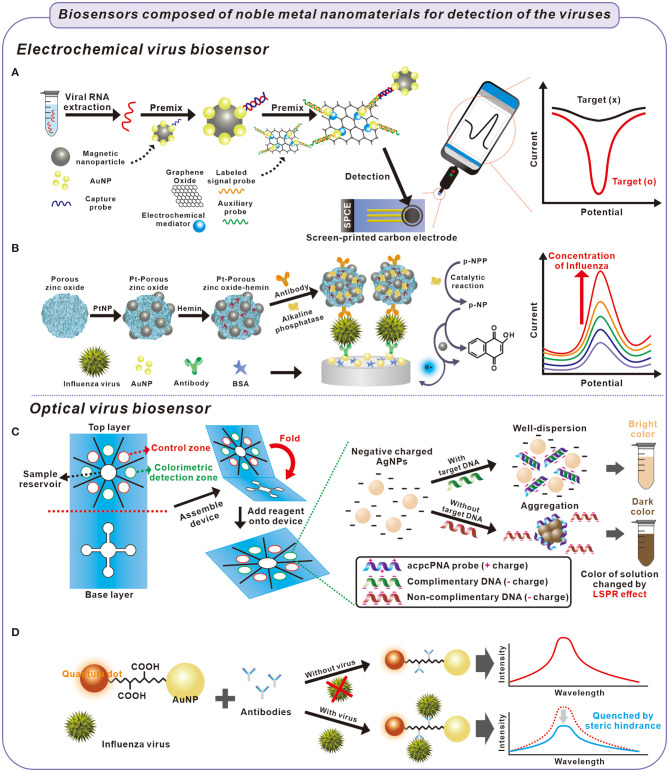Figure 1.
Fabrication process of electrochemical and optical biosensors for detection of viruses causing respiratory illness and principle of detection of the viruses. (A) Extracted viral RNA was captured with a capture probe on AuNPs and collected using magnetic nanoparticles. The viral RNA was electrochemically detected on a screen-printed carbon electrode composed of graphene oxide, mediator, and probes (Zhao et al., 2021). (B) Influenza virus was captured between antibodies in sandwich-structured biosensor composed of Pt-porous zinc oxide-hemin and AuNPs. The influenza virus was electrochemically detected through the catalytic oxidation of p-NP after catalytic reaction of p-NPP inside the Pt-porous-zinc oxide hemin structure (Yang et al., 2016). (C) The influenza virus was detected by the colorimetric biosensor. In the presence of target DNA from the influenza virus, negative charged AgNPs were well-dispersed because of the hybridization of probe and target DNA, with a bright color. In contrast, the AgNPs were aggregated with probe DNA in the absence of target DNA, which cause the solution color to darken (Teengam et al., 2017). (D) The influenza virus was optically detected using quenching effect. When the influenza virus was capture by the antibodies, the intensity of QDs immobilized AuNPs decreased by steric hindrance (Nasrin et al., 2020).

